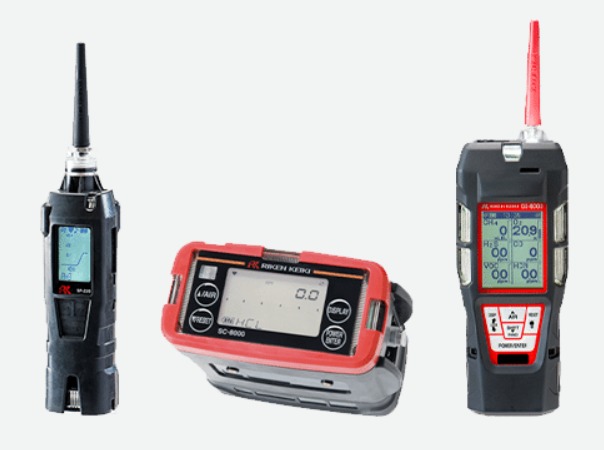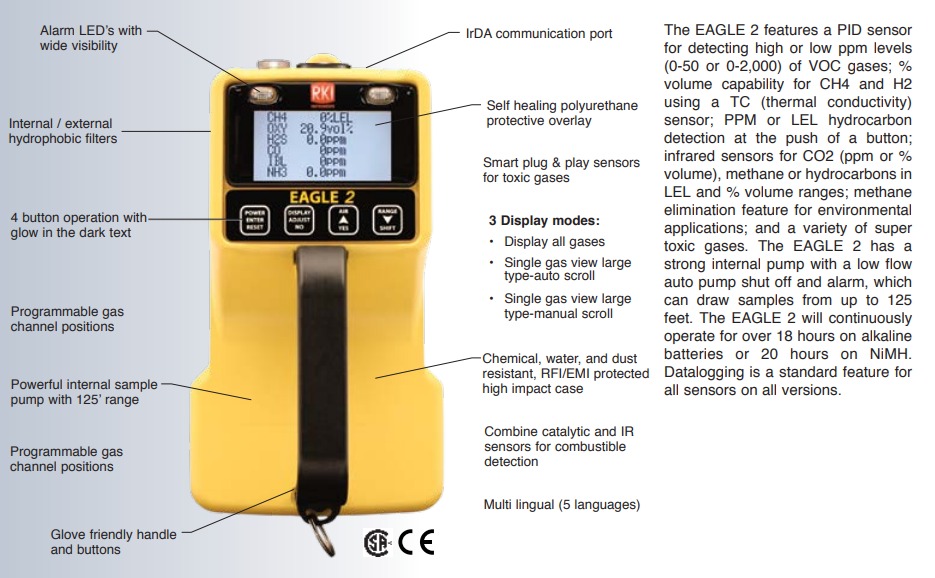Ensuring compliance with EPA standards for gas monitoring systems is crucial for businesses and industries across the board. As environmental regulations continue to evolve, the need to upgrade gas monitoring systems to meet the latest standards has become more pressing than ever. Non-compliance can result in severe penalties and reputational damage, making it imperative for organizations to stay ahead of regulatory changes.
It’s important to adhere to EPA standards for gas monitoring systems and understand the consequences of failing to upgrade systems to meet the latest requirements. These insights go a long way into ensuring compliance and mitigating risks associated with outdated monitoring systems. At the forefront of gas detection equipment technology, RKI Instruments stands as an innovative force dedicated to providing reliable, rugged gas detection equipment. At Haaker Underground, we are proud to offer RKI’s reliable gas detection equipment, ensuring the safety of your life and property and helping you keep your detection and monitoring systems up to date.
Understanding EPA Standards for Gas Monitoring Systems
The Environmental Protection Agency (EPA) has introduced significant revisions and expansions through its supplemental proposal for gas monitoring systems. These changes aim to enhance the technical requirements for ensuring compliance and reducing emissions. The proposed modifications could have a substantial impact on existing monitoring systems, necessitating updates to meet the new standards.
The EPA’s supplemental proposal encompasses major revisions focused on bolstering the efficacy of gas monitoring systems. It introduces enhanced technical requirements such as advanced monitoring technologies, precise data reporting, and stringent emission control measures. The proposal also emphasizes the reduction of pollution from oil and natural gas facilities, aligning with the agency’s commitment to environmental conservation.
The EPA’s regulations for gas monitoring systems encompass a comprehensive framework to control air pollution and mitigate environmental impact. With a focus on reducing methane emissions, these regulations also address greenhouse gas reporting requirements, emphasizing the need for accurate and transparent data collection. The EPA’s goal is to foster sustainable practices within the oil and natural gas industry, contributing to a cleaner and greener environment.
Upgrading Gas Monitoring Systems for Compliance
In today’s industrial landscape, ensuring compliance with the Environmental Protection Agency (EPA) standards is a crucial aspect of operations. Upgrading gas monitoring systems to meet EPA standards involves specific technical requirements, best practices, and challenges that industries must navigate to achieve seamless compliance.
When upgrading gas monitoring systems to comply with EPA standards, it’s essential to consider the specific technical requirements and best practices. Investing in advanced monitoring equipment, such as continuous emission monitoring systems (CEMS), is imperative to accurately measure emissions of gases and particulate matter. These advanced systems not only provide real-time data but also facilitate compliance with EPA regulations regarding emissions monitoring. Additionally, integrating robust data reporting mechanisms ensures that the gathered data is accurately documented and easily accessible for regulatory purposes.

Maintenance protocols play a pivotal role in sustaining the effectiveness of upgraded gas monitoring systems. Implementing regular calibration and maintenance schedules for monitoring equipment is essential to uphold accuracy and reliability. Adhering to industry best practices in equipment maintenance further ensures consistent compliance with EPA standards.
The process of upgrading gas monitoring systems presents challenges such as budget constraints and technology integration. Industries can mitigate budget constraints through cost-effective solutions and explore financial incentives for sustainable technology investments. Technology integration challenges can be overcome by providing comprehensive staff training and engaging with experts and service providers specializing in gas monitoring systems.
By addressing these technical requirements, best practices, and challenges, industries can successfully upgrade gas monitoring systems to meet EPA standards, ultimately contributing to environmental stewardship and regulatory compliance.
Benefits of Upgrading Gas Monitoring Systems
Ensuring compliance with EPA standards through the upgrade of gas monitoring systems offers a multitude of benefits, spanning from environmental and health impacts to operational and financial advantages. The implementation of advanced gas monitoring systems significantly contributes to improving environmental quality and public health. Compliance with EPA standards ensures stringent monitoring of harmful emissions, thereby reducing pollution and mitigating potential health risks within communities. By constantly tracking and regulating gas emissions, these enhanced systems aid in creating a healthier and safer environment for all. Upgrading gas monitoring systems also offers operational and financial advantages, including heightened efficiency, reduced regulatory risks, and long-term cost savings. Real-time data acquisition enables informed decision-making, contributing to prudent resource management.

RKI Instruments, the Best Way to Detect
Ensuring compliance with EPA standards through the upgrade of gas monitoring systems is a vital aspect of responsible and sustainable operations. By proactively upgrading gas monitoring systems, businesses can mitigate the risks of regulatory violations, prevent costly shutdowns, and improve public perception. Advanced monitoring systems not only ensure adherence to EPA standards but also offer real-time data insights for prompt decision-making and predictive maintenance. In embracing technological advancements and prioritizing compliance, organizations position themselves as industry leaders in environmental sustainability. Upholding EPA standards is not just a legal requirement but a moral obligation, contributing to a culture of environmental stewardship and responsible business practices.
RKI Instruments and Haaker Underground stand as partners in this journey, providing the tools and expertise needed to achieve and exceed EPA compliance standards, ultimately contributing to a cleaner and healthier future. RKI Instruments, with its commitment to excellence and Gas Detection for Life, provides reliable equipment to meet the evolving needs of environmental regulations. Haaker Underground proudly offers RKI’s advanced gas detection equipment solutions, empowering industries to navigate compliance challenges seamlessly. Raise the standard of your detection by messaging us or giving us a call today at (909) 598-2706.
